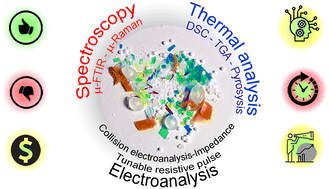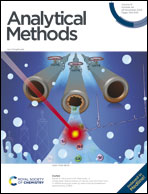When microplastics meet electroanalysis: future analytical trends for an emerging threat†
Abstract
Microplastics are a major modern challenge that must be addressed to protect the environment, particularly the marine environment. Microplastics, defined as particles ≤5 mm, are ubiquitous in the environment. Their small size for a relatively large surface area, high persistence and easy distribution in water, soil and air require the development of new analytical methods to monitor their presence. At present, the availability of analytical techniques that are easy to use, automated, inexpensive and based on new approaches to improve detection remains an open challenge. This review aims to outline the evolution and novelties of classical and advanced methods, in particular the recently reported electroanalytical detectors, methods and devices. Among all the studies reviewed here, we highlight the great advantages of electroanalytical tools over spectroscopic and thermal analysis, especially for the rapid and accurate detection of microplastics in the sub-micron range. Finally, the challenges faced in the development of automated analytical methods are discussed, highlighting recent trends in artificial intelligence (AI) in microplastics analysis.



 Please wait while we load your content...
Please wait while we load your content...